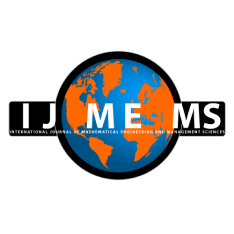Retinderdeep Singh
Department of Computer Science and Engineering, Chitkara University Institute of Engineering and Technology, Chitkara University, Punjab, India.
Chander Prabha
Department of Computer Science and Engineering, Chitkara University Institute of Engineering and Technology, Chitkara University, Punjab, India.
Meena Malik
Department of Computer Science and Engineering, Chandigarh University, Punjab, India.
Ram Kishun Lodhi
Department of Applied Science, Symbiosis Institute of Technology, Symbiosis International (Deemed University), Lavale, 412115, Pune, Maharashtra, India.
DOI https://doi.org/10.33889/IJMEMS.2025.10.6.099
Abstract
Medical imaging depends heavily on spine segmentation for diagnosing spinal disorders as well as developing treatment plans. The proposed research describes a deep learning framework for spine segmentation where two state-of-the-art models known as DeepLabv3+ and U-Net are evaluated for comparison. Our team applied the developed framework using 1089 high-resolution CT images which had been annotated with segment outlines for cervical, thoracic, lumbar and sacral areas. Person working with the DeepLabv3+ model produced segmentations with 0.925 Intersection over Union (IoU) and 0.920 Dice score along with 0.920 F1 score and an accuracy rate of 98.5%. The U-Net model achieved better performance when applied with a ResNet34 backbone by reaching an IoU of 0.953 alongside Dice score 0.951 F1 score 0.951 and accuracy reaching 98.6%. U-Net outperforms existing methods of spine segmentation by achieving superior results in area detection along with boundary definition accuracy. The research provides a thorough assessment of network designs and practical utility tests to support the development of automated spine segmentation applications that can work effectively in clinical settings.
Keywords- DeepLabv3+, Deep learning, U-Net, Segmentation, Spine.
Citation
Singh, R., Prabha, C., Malik, M., & Lodhi, R. K (2025). Leveraging DeepLabv3+ and U-Net Models for Accurate Spine Segmentation in CT Scans. International Journal of Mathematical, Engineering and Management Sciences, 10(6), 2125-2145. https://doi.org/10.33889/IJMEMS.2025.10.6.099.



